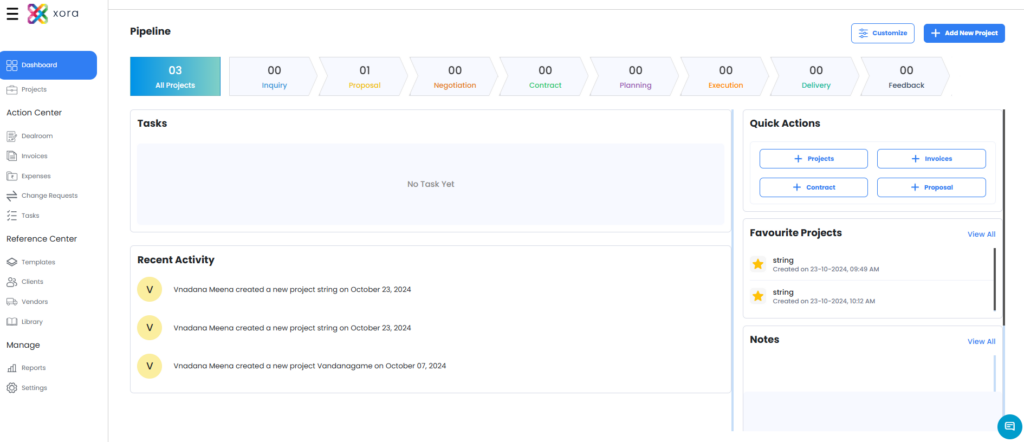
Table of Contents
Introduction
Creating an interior designer contract can be daunting, whether you’re a seasoned professional or new to the field. A well-crafted interior design agreement protects both you and your client, ensuring that expectations are communicated and met. In this comprehensive guide, we’ll walk you through the essential steps to mastering interior designer contracts. Read on to learn how to create a flawless document that sets the stage for successful projects.
1. Understand the Essential Elements of Interior Designer Contracts
Scope of Work
The scope of work is the cornerstone of any interior design agreement. It outlines the specific services you’ll provide and sets the boundaries of what is included in the project. Detailing the scope of work helps avoid misunderstandings and ensures that both parties have a clear understanding of what to expect.
Timeline
Including a detailed timeline in your contract is crucial for managing client expectations and keeping the project on track. Specify key milestones, deadlines, and the overall project duration to establish a clear roadmap for the project’s progression.
Payment Terms
Clearly define payment terms in your interior design agreement. This includes the total project cost, payment schedule, and acceptable payment methods. Consider including clauses for late payments, deposits, and contingencies for additional costs that may arise during the project.
Client Responsibilities
Outline the responsibilities of the client in your interior designer contract. This could include providing access to the property, approving designs within a certain timeframe, and promptly communicating any changes or concerns. Clear client responsibilities help ensure a smooth workflow and timely project completion.
Cancellation and Termination Policies
To protect both parties, include a section on cancellation and termination policies. This should cover circumstances under which the agreement can be terminated, the process for cancellation, and any associated fees or penalties.
Revisions and Approvals
Specify the number of revisions included in the project’s scope, the process for requesting and approving changes, and any additional costs for revisions beyond the agreed-upon number. This helps manage expectations and ensures that both parties are aligned on project deliverables.
Furnishings and Materials
Clearly outline how furnishings and materials will be selected, procured, and installed. Specify whether the procurement will be managed by you, the designer, or the client. Include details about warranties, return policies, and liability for damages or defects.
2. Drafting the Interior Design Agreement
Legal Terminology
Use clear and concise legal terminology to avoid ambiguity. If you’re not familiar with legal language, consider consulting a legal professional to ensure that your contract is comprehensive and enforceable.
Customizing for Each Client
Each client and project is unique, so customize your interior design agreement to reflect the specific needs and terms of each engagement. Tailoring your contracts demonstrates professionalism and ensures that all relevant details are covered.
Review and Revise
Thoroughly review and revise your contract before presenting it to your client. Make sure to cleanse it of any errors, inconsistencies, and omissions. Reviewing your contract with a legal advisor can also help you identify any potential issues.
Using Contract Management Software
Investing in contract management software can streamline the process of creating, managing, and storing your interior designer contracts. Software solutions like Xora offer free trials with a money-back guarantee, allowing you to explore their features and determine if they’re the right fit for your business. Xora’s customized industry-specific templates and contract management tool can help you automate and organize your contracts, saving you time and reducing the risk of errors. Additionally, it allows you to formalize your contracts by getting the documents formally signed with e-signatures.
3. Negotiating the Contract
Communicate Openly
Effective communication is key to successful contract negotiations. Clearly explain the terms and conditions of your interior design agreement to your client, and address any questions or concerns they may have. Open dialogue helps build trust and ensures that both parties are on the same page.
Be Flexible
While it’s important to protect your interests, being flexible during negotiations shows that you’re willing to work collaboratively with your client. Consider offering compromises on non-essential terms and be open to making reasonable adjustments to accommodate your client’s needs.
Document All Changes
Any changes to the initial contract should be documented and agreed upon by both parties. Maintain a written record of all modifications to ensure that there is no confusion later in the project.
4. Reviewing and Signing the Interior Design Agreement

Conduct a Final Review
Before signing, both parties should conduct a final review of the interior designer contract to ensure that all terms are accurately reflected and understood. Taking the time to review the contract thoroughly helps prevent future disputes and reinforces a mutual commitment to the project’s success.
Sign and Date the Contract
Once both parties are satisfied with the contract, sign and date the document. Ensure that each party receives a signed copy for their records. In some cases, you may need to consider notarizing the contract to add an extra layer of legal validity.
Secure Electronic Signatures
Consider using electronic signature tools to facilitate a faster and more convenient signing process. Platforms like DocuSign and Xora offer secure and legally binding electronic signatures, making it easier to finalize contracts remotely.
5. Implementing and Managing the Contract

Track Progress
Use project management tools to track the progress of your interior design projects and ensure that all contract terms are being met. Keeping an organized record of milestones, deadlines, and payments helps you stay on top of your obligations and deliver on your promises.
Communicate Regularly
Maintain regular communication with your client throughout the project to address any issues, provide updates, and seek approvals as needed. Transparent and ongoing communication reinforces trust and helps prevent misunderstandings.
Handle Disputes Professionally
Despite your best efforts, disputes may arise. Handle conflicts professionally by referring back to the terms of your interior design agreement and seeking resolution through constructive dialogue. Consider involving a mediator if necessary to find a fair and amicable solution.
Evaluate and Improve
After completing a project, take the time to evaluate the effectiveness of your interior designer contracts. Seek feedback from your clients and reflect on any challenges you encountered. Use these insights to continuously improve your contract templates and business practices.
Why Formal Interior Designer Contracts are Important?
According to a survey by Statista, the global interior design market was valued at approximately 150.7 billion U.S. dollars in 2020 and is projected to continue growing. This highlights the increasing demand for interior design services and underscores the importance of having robust interior designer contracts in place.
Furthermore, research from Forbes indicates that using contract management software can reduce contract processing times by up to 80%. This demonstrates the value of incorporating technology into your contract management practices.
Comparing Solutions for Interior Designer Contracts and Interior Design Agreements in India
When managing interior designer contracts and interior design agreements, having the right tools is crucial for streamlining operations, ensuring legal compliance, and enhancing client satisfaction. Here’s a comparison of some popular contract management solutions available in India, with a special focus on how Xora stands out as a top choice.
1. Zoho Contracts
Overview: Zoho Contracts offers comprehensive contract lifecycle management designed to automate and simplify contract processes.
Features:
- Customizable contract templates.
- E-signature integrations.
- Workflow automation for approvals.
- Detailed analytics and reporting.
Pros:
- Highly customizable to suit specific business needs.
- Integrates well with other Zoho products.
Cons:
- The user interface can be complex for beginners.
- Higher cost for premium features.
Relevance: Zoho Contracts is a strong choice for general business contract management, but its complexity might be overwhelming for interior designers specifically looking for streamlined interior design agreement management.
2. DocuSign
Overview: DocuSign is a global leader in electronic signature solutions and contract management.
Features:
- Secure digital signatures.
- Cloud storage for documents.
- Workflow automation.
- Compliance with global security standards.
Pros:
- Strong security features.
- Widely recognized and trusted.
Cons:
- Expensive for small businesses.
- Limited customization for specific industries.
Relevance: DocuSign provides robust security for interior designer contracts but may lack the industry-specific features needed for detailed interior design agreements.
3. Adobe Sign
Overview: Adobe Sign provides robust digital document management and electronic signature services.
Features:
- Integration with Adobe’s Creative Cloud.
- Customizable workflows.
- Mobile app for on-the-go management.
- Real-time notifications.
Pros:
- Seamless integration with Adobe tools.
- Easy to use with a familiar interface.
Cons:
- Can be cost-prohibitive for small enterprises.
- Requires an Adobe ecosystem for full benefits.
Relevance: Adobe Sign is useful for designers already using Adobe products, offering ease of use for contract management, but its cost might be a barrier for smaller interior design firms.
4. Xora
Overview: Xora is an all-in-one business management tool specifically designed for creative professionals, including interior designers. It offers specialized features for managing client interactions, projects, and contracts.
Features:
- Ready-to-use contract templates tailored for interior designers.
- Integrated project management tools.
- E-signature and secure document storage.
- Real-time collaboration features.
- Comprehensive client management and invoicing capabilities.
Pros:
- Tailored specifically for the needs of interior designers, ensuring all features are relevant and useful.
- User-friendly interface that simplifies contract creation and management.
- Cost-effective solution with a free trial and money-back guarantee, making it accessible for small businesses and freelancers.
- Integrates seamlessly with other business management tools within the Xora platform.
Cons:
- As a newer player, it may not yet have the extensive range of integrations found in more established products.
- Continuous updates mean that new users may need to stay abreast of evolving features.
Relevance: Xora stands out as the ideal solution for managing interior designer contracts and interior design agreements. Its industry-specific features ensure that interior designers have all the tools they need in one place, making contract management more efficient and tailored to their unique needs.
Why Xora Stands Out
For interior designers in India, Xora presents a particularly compelling option. Unlike generic contract management tools, Xora’s platform is designed with the unique needs of interior designers in mind. The pre-built templates, combined with the intuitive project management and client interaction features, make it a comprehensive solution that simplifies the entire contract management process.
Moreover, Xora’s competitive pricing, coupled with a free trial and money-back guarantee, ensures that businesses of all sizes can benefit from its powerful features without a significant upfront investment. This makes Xora not just a tool, but a strategic partner in driving business efficiency and client satisfaction.
In conclusion, while platforms like Zoho Contracts, DocuSign, and Adobe Sign offer robust features, Xora’s tailored approach and user-friendly design make it a standout choice for interior designers looking to streamline their contract management processes in India.
Conclusion
Mastering the art of interior designer contracts is essential for ensuring successful projects and protecting both you and your clients. By understanding the key elements, drafting comprehensive agreements, negotiating effectively, and managing contracts diligently, you can create a solid foundation for your interior design business. Remember, using resources like Xora’s contract management tool can streamline your process and enhance efficiency. Try Xora today with a free trial and a money-back guarantee.

Leave a Reply